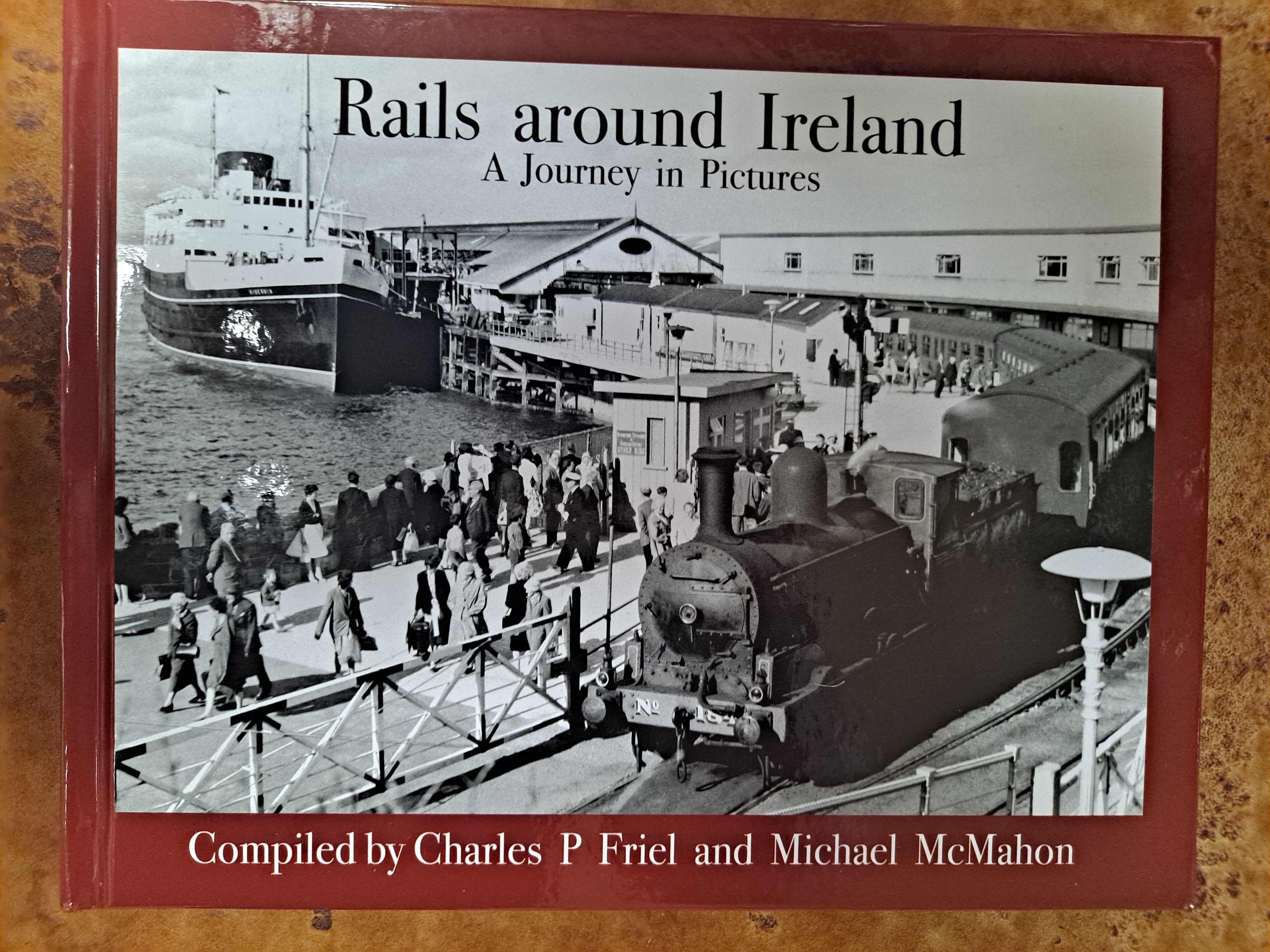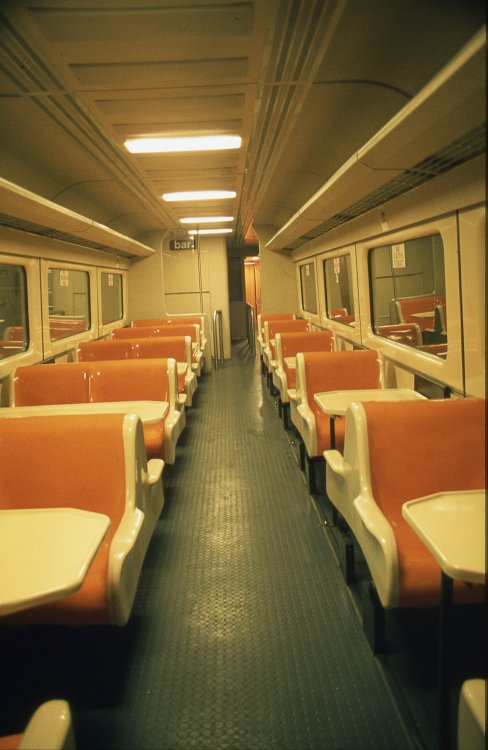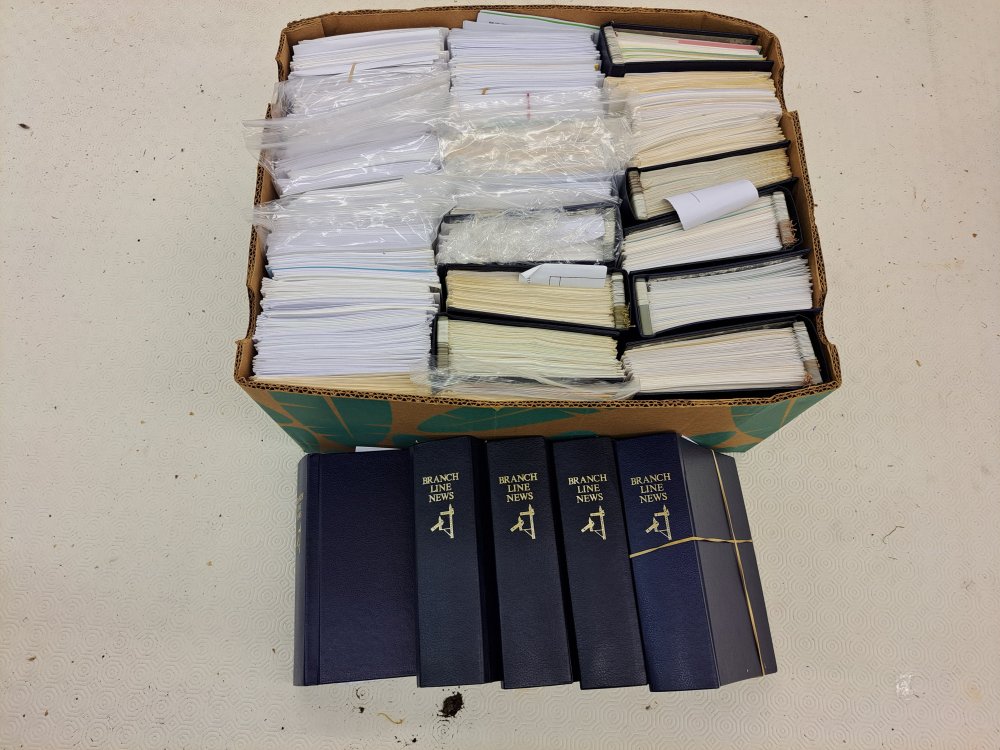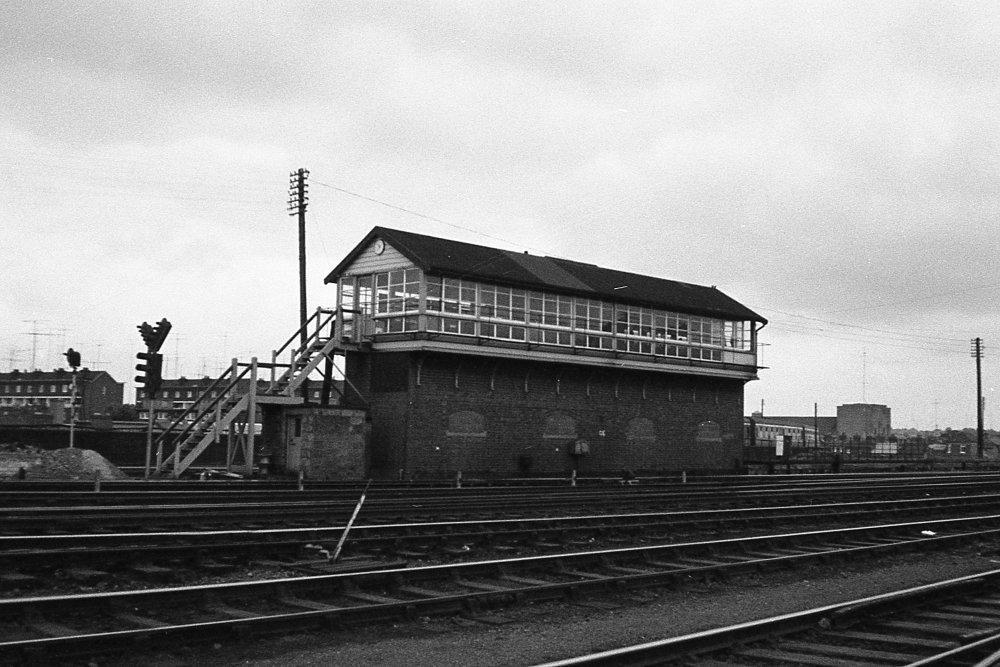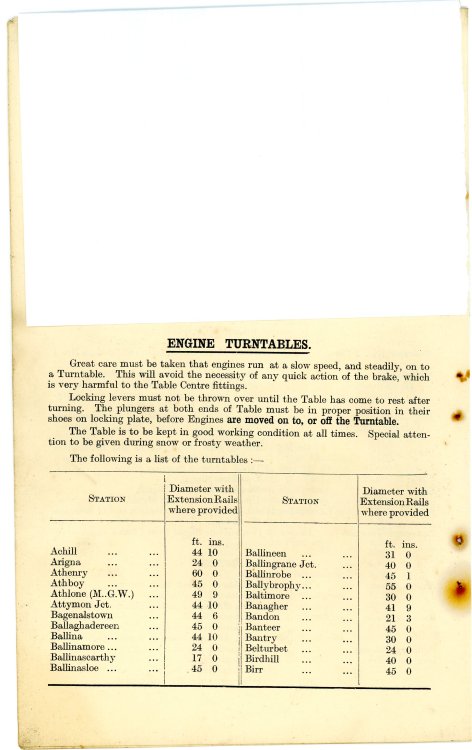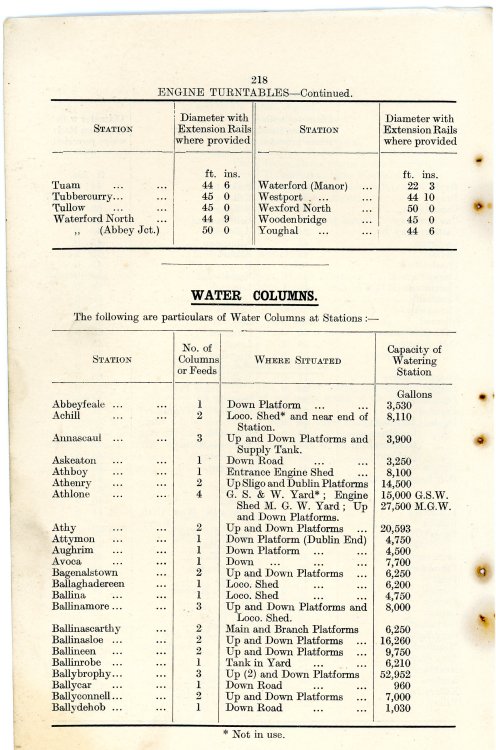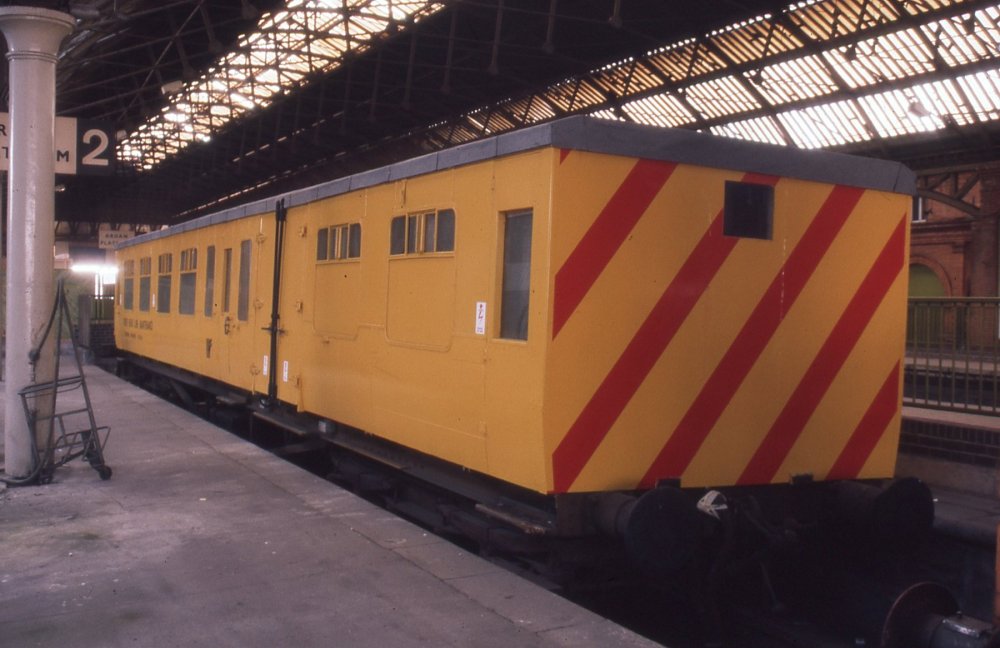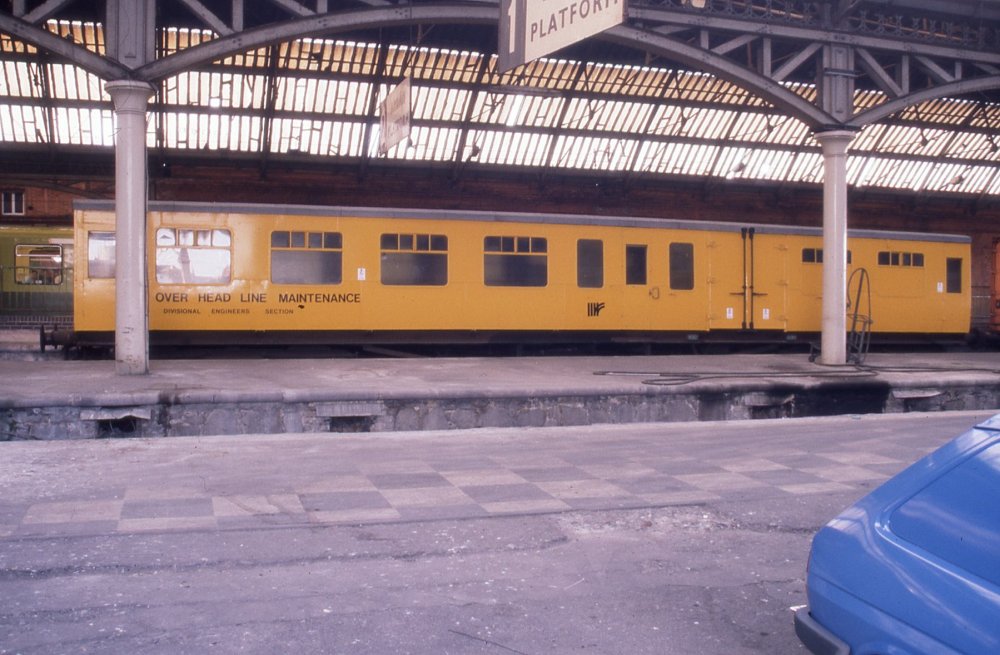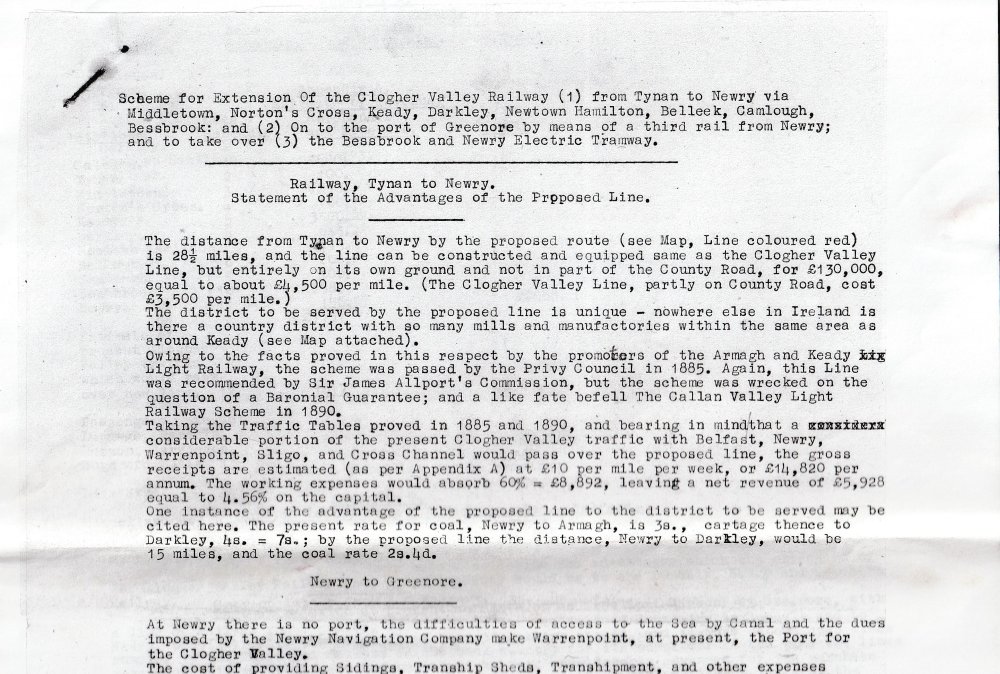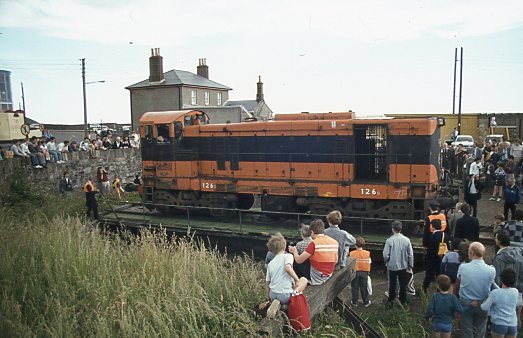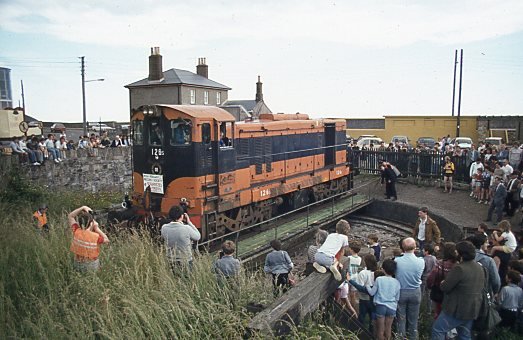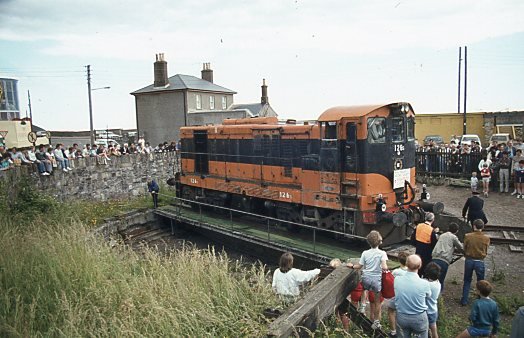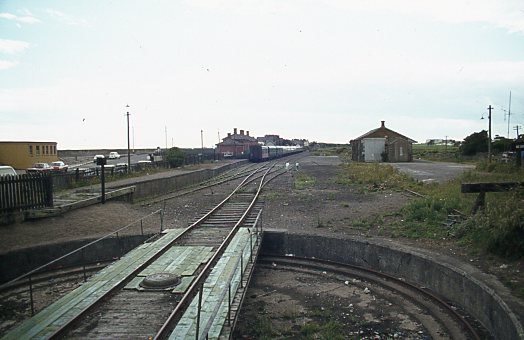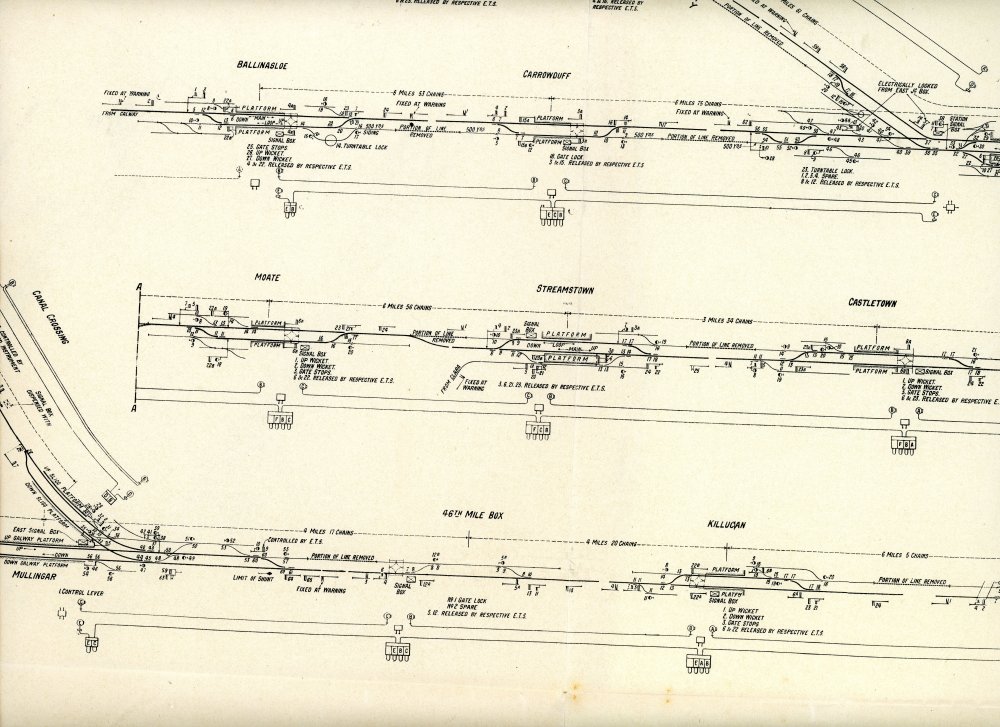-
Posts
151 -
Joined
-
Last visited
-
Days Won
2
Content Type
Profiles
Forums
Events
Gallery
Blogs
Store
Community Map
Everything posted by seagoebox
-
The thinking was that they were to be wipe clean, and were hard, therefore discouraging passengers from sitting in the diner as regular seats, but they had a glossy finish and were very uncomfortable to sit in. They got the "Ronald McDonald" nickname because of similar seating in the kids area of McDonalds! They were eventually with conventional Mk3 seats covered in fabric which became plastered with spilt food and were not at all pleasant to look at never mind risk your life by sitting on them !
-
The latest Mark 3 dining car... 1st February 1985, note the "Ronald McDonald" plastic seats, you could'nt stay sat in them unless you had velcro on your trousers! A far cry fr
-
The "Dukes Railway"
-
The elderly "gentleman" is indeed just that, John Harcourt, he is a resident in a home near Balmoral.
-
Zoom talk to the RPSI on the photographs of Mac Arnold on Wednesday at 7.30 by Michael McMahon
- 1 reply
-
- 1
-

-
"V" was painted on a wagon when it was listed for scrapping, an upside down "V" was painted on below the first "V" to turn it into an "X" which meant that scrapping was then authorised. The instruction was then given to the scrap man to scrap only vehicles marked with an "X" I remember a story about a scrap merchant from Armagh engaged on cutting up A & C classes in Inchicore cutting locos with a "V" before parts had been recovered to keep others going !
-
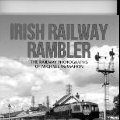
Review of Ireland's Rail Network
seagoebox replied to Barl's topic in What's happening on the network?
Full page feature in todays Irish Times. -
Jonathan, Mostly BR material, when there is Irish stuff it is in there but it will take ages to sort, good reading material for the smallest room in the house, you should be through it by 2053! Michael.
-
Branch Line Society magazine, Branch Line News, large quantity 1991 to 2008, some bound volumes rest loose, ( see picture) free to a good home, currently in South Co. Louth, free delivery to Belfast or Dublin.
-

Herbie Richards/Brendan Pender GSWR Carriage Diagrams book
seagoebox replied to Colin R's topic in General Chat
Colin, unfortunately Brendan died some years ago, Herbert is still a regular attender at the IRRS archive on a Tuesday evening. -
"The Meath Road" by John O'Meara, IRRS Journal Vol 4, Spring 1957, number 20, pages 218 to 240.
-
- 29 replies
-
- 7
-

-

-
- turntables
- cie
-
(and 1 more)
Tagged with:
-
-

”West Cork Railways, Birth, beauty and betrayal
seagoebox replied to Westcorkrailway's topic in News
€25 from Mercier Press -

Mill at Cross Guns Bridge
seagoebox replied to Auto-Train Original's topic in Photos & Videos of the Prototype
There is a very good article in the IRRS Journal Vol 27, no 190, pages 102-109 including a photo of the removal of the bridge over the Royal Canal on 2nd May 1992. The track was lifted in March 1977 -
What year... 2/1916, 3/1922, 9/ 1928, 4/1936, 3/1944 ?
-
I am currently in the IRRS at Heuston, Clifton Flewitt has a copy, looks brand new for €40...
-
Clements & McMahon !
-

The Official Irish 'Might Have Beens' Thread
seagoebox replied to minister_for_hardship's topic in General Chat
-
-

Layout Idea: GNR(I) Bundoran-Sligo line
seagoebox replied to RaglanRoad's topic in Irish Model Layouts
George Mahon covered the Enniskillen & Bundoran Railway, The Enniskillen & Bundoran Extension Railway and the Enniskillen, Bundoran & Sligo Railway in the IRRS Journal in a long running series of articles "Irish Railways in 1860 to 1879, over 10 volumes of the Journal starting in Volume no 6, issue no 30 Spring 1962 to Vol 15 no 95 October 1984. His total contribution to all the Irish Railways in 18XX series started with the year 1853 in the Spring 1954 Journal, and he finished with 1879 in the June 1984 Journal, some 30 years later, producing an invaluable resource of the early days. -

Cavan & Leitrim Railway brake van 16L - ref pic?
seagoebox replied to Pete00018's topic in Irish Models
Book... The Cavan & Leitrim Railway , the last decade by Tom Ferris & Patrick Flanagan, published 1997 by Midland Publishing has good pictures of sister vans 14L and 17L on page 54. -
Jb1911... I know this is slightly outside your time period ( it is from the Railway Gazette series of articles dated December 1930) featuring the singling of double track by the GSR on the former MGWR section between 1927 & 1930. The diagrams show the layout post-singling if you decided to go for that option ! If you want any other MGWR stations let me know, the Railway Gazette diagram covers from Clonsilla to Inny Junction, Mullingar to Ballinasloe and Athlone to Roscommon.
-
I have one the same here in my collection from the 73rd mile box... the canvas bit is 35 cms long, 15cms across, the canvas wrap around bit to hold the ETS adds another 5cms to the end, the overall thickness is 1cm.
.png.c363cdf5c3fb7955cd92a55eb6dbbae0.png)
